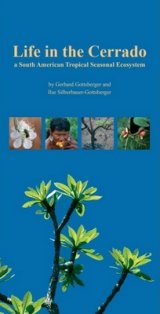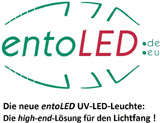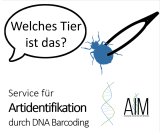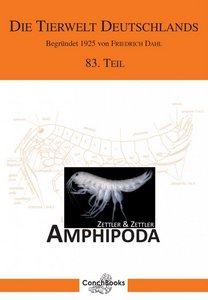Arachnida/Myriapoda/Crustacea
Adis J 2002
Amazonian Arachnida and Myriapoda. Identification keys to all classes, orders, families, some genera, and lists of known terrestial species.
590 S., zahlr. Abb., 6 Farbtafeln. Offenbar das letzte Exemplar vom Verlag! Leider ist die Bindung nicht so gut wie der Preis es erwarten lässt...
BAUCHHENSS E & SCHOLL G 1985
Bodenspinnen einer Weinbergsbrache im Maintal (Steinbach, Lkr. Haßberge). Ein Beitrag zur Spinnenfaunistik Unterfrankens.
Abh. nat. wiss. Ver. Würzburg 23/24, S. 3-23, SONDERDRUCK/offprint, antiquarisch/secondhand
BAUMGART B 1988
Beutesuchverhalten und Beutefangerfolg von Raubmilben in räumlich strukturierter Umgebung.
Originaldissertation Uni Aachen, 212 S., A5, Broschur
BERNINI et al. 1995
Arachnida Acari. Checklist delle Specie della Fauna Italiana Bd. 24
131 pp., A4, Broschur, sehr guter Zustand.
BJORN, P. 1997
A taxonomic revision of the African part of the orb-weaving genus Argiope (Araneae: Araneidae). 41 S. SW-Abbn.
Ent. Scand. 28:2 SONDERDRUCK/offprint, antiquarisch/secondhand
Braunwalder ME 2005
Fauna Helvetica: Scorpiones.
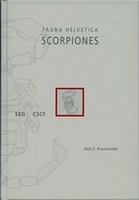 240 S., 34 farb. Abb., 43 Fig. Text deutsch u. italienisch.
240 S., 34 farb. Abb., 43 Fig. Text deutsch u. italienisch.
British Arachnological Society 1973-1980
Bulletin, Vol 2 Heft 7,8,9; Vol. 4 Heft 4,5,6,7,8,9; Vol. 5 Heft 1-5. 14 Hefte, broschiert, sehr sauber.
CLOUDSLEY-THOMPSON J L 1966
Spiders, Scorpions, Centipedes and Mites.
Pergamon Press, 278 S., zahlr. Abb., Hardcover, Schnitt und Cover etwas vergilbt, sonst guter Zustand
CROME W 1962
Die Paarung bei Micromata rosea (Clerck) (Araneae: Eusparassidae).
Abh. Ber. Natkde. Vorgesch. Magdeburg, Bd. XI, Nr. 3, S. 43-64, 7 Abb., SONDERDRUCK/offprint, antiquarisch/secondhand
CROME W 1962
Die Wohnröhre von Conothele arboricola Pocock nebst Bemerkungen über die Lebensweise dieser Falltürspinne (Araneae: Ctenizidae).
Zool. Anz. Bd. 168, Heft 11-12, S. 450-459, 19 Abb., SONDERDRUCK/offprint, antiquarisch/secondhand
CROME W 1962
Studien an Krabbenspinnen (Araneae: Thomisidae). 2. Die Stellung der Gattung Pherecydes O. Pickard-Cambridge, 1883, im System der Thomisinae.
Mitt. a. d. Zool. Mus. in Berlin, Bd. 38, Heft 1, S. 153-169, 13 Abb., SONDERDRUCK/offprint, antiquarisch/secondhand
HELVERSEN & MARTENS 1972
Unrichtige Fundort-Angaben in der Arachniden-Sammlung Roewer. 15 S. 10 Abbn.
Senckenbergiana biol. 53:1/2 SONDERDRUCK/offprint, antiquarisch/secondhand
HOERSCHELMANN U 1992
Ökologie und Produktionsbiologie benthischer Makroinvertebrata des Belauer Sees (Schleswig-Holstein) unter besonderer Berücksichtigung der Hydrachnidia (Acari).
Faun.-Ökol. Mitt. Suppl. 14: 1-100, brosch. SONDERDRUCK/offprint, antiquarisch/secondhand
LOGUNOV & HECIAK 1996
Asianellus, a new species of the subfamily Aelurillinae (Araneae: Salticidae). 15 S. SW-Abbn.
Ent. Scand. 27:1 SONDERDRUCK/offprint, antiquarisch/secondhand
Mikhaljova EV 2004
The Millipedes (Diplopoda) of the Asian part of Russia.
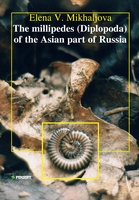 292 pp., 35 maps, 675 b/w figs, color photos, references, index, hardback. A complete synopsis of the millipede fauna of Asian Russia
292 pp., 35 maps, 675 b/w figs, color photos, references, index, hardback. A complete synopsis of the millipede fauna of Asian Russia
MOUSTAFA EL-DIN A A 1995
Das circadiane System des Skorpions: elektrophysiologische Analyse des peripheren und zentralen circadianen Signals in den efferenten neurosekretorischen Fasern des optischen Systems.
Originaldissertation Uni Frankfurt am Main, 110 S., A5, Broschur
Nentwig W 1993
Spiders of Panama.
Biogeography, investigation, phenology, checklist, key and bibliography of a tropical spider fauna. Flora & Fauna Handbook No. 12, 274pp., 165 Abb., A5 softcover.
Vergriffen, letztes Exemplar, ganz leichte Lagerspuren. Sonderangebot, statt 98,00 €
Pedroli-Christen A 1993
Faunistique des Mille-Pattes (Diplopoda) de Suisse. Faunistik der Tausendfüsser der Schweiz.
167, LXII S., Text französisch und deutsch.
PROSS A 1966
Untersuchungen zur Entwicklungsgeschichte der Araneae (Pardosa hortensis (Thorell)) unter besonderer Berücksichtigung des vorderen Prosomaabschnittes.
Z. Morph. Ökol. Tiere, Bd. 58, S. 38-108, 30 Abb., SONDERDRUCK/offprint, antiquarisch/secondhand
RAMÌREZ & GRISMADO 1997
A review of the spider family Filistatidae in Argentinia (Arachnida: Araneae), with a cladistic reanalysis of filistatid genera. 31 S. SW-Abbn.
Ent. Scand. 28:3 SONDERDRUCK/offprint, antiquarisch/secondhand
RAMÌREZ, LOPARDO & BONALDO 2001
A review of Chilean spider genus Olbus, with notes on the relationship of the Corinnidae (Arachnida, Araneae). 21 S. SW-Abbn.
Ent. Scand. 31:4 SONDERDRUCK/offprint, antiquarisch/secondhand
RAMÌREZ, M. 1995
A phylogenetic analysis of the subfamilies of Anyphaenidae (Arachnida, Araneae). 23 S. SW-Abbn.
Ent. Scand. 26:4 SONDERDRUCK/offprint, antiquarisch/secondhand
SAARISTO, M. 2001
Dwarf hunting spiders or Onopidae (Arachnida, Araneae) of the Seychelles. 51 S. SW-Abbn.
Ent. Scand. 32:3 SONDERDRUCK/offprint, antiquarisch/secondhand
SANTOS & BRESCOVIT 2003
A revision of the Neotropical species of the lynx spider genus Peucetia Thorell 1869 (Araneae, Qxyopidae). 21 S. SW-Abbn.
Ent. Scand. 34:1 SONDERDRUCK/offprint, antiquarisch/secondhand
SAVORY TH 1952
The spider´s web.
154 S., 27 Bild - und Farbtaf., 35 Abb., Goldprägung. Schutzumschlag mit Riß, Buch selbst sehr gut.
Schmidt G 2003
Die Vogelspinnen. Eine weltweite Übersicht.
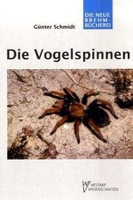 383 S., 74 Farbfotos, 846 Abb. - Neue Brehm-Bücherei 641
383 S., 74 Farbfotos, 846 Abb. - Neue Brehm-Bücherei 641
Stucki & Zaugg 2005
Fauna Helvetica 15: Decapoda.
56 S., 23 Abb., 3 Farbtafeln, 39 Tab., 8 Karten. Text français/deutsch.
Eine Darstellung des aktuellen Status der Krebsfauna der Schweiz sowie der Biologie und Verbreitung der vorkommenden Arten
Weigmann G 2006
Die Tierwelt Deutschlands 76. Teil: Hornmilben (Oribatida).
520 S., 234 Abb.-gruppen, 8 Taf. mit REM-Photos. Includes a Family Key in English.
The last complete textbook of oribatid mites from Germany is 75 years old (Willmann 1931). This contribution deals with the identification of oribatid mites (Acari: Oribatida) of Germany and the adjacent regions of the neighbouring countries. The keys comprise 84 families with more than 190 genera. About 520 species from German areas are described for which chorological and ecological data are given. Altogether about 620 species are treated including those which have been found up to now in the adjacent regions, only.
The keys are illustrated by 234 tables with informative line drawings. The appendix presents a family key in English, additionally. The book is essential for taxonomists and ecologists dealing with Centraleuropean oribatid mites.
WESOLOWSKA & SZEREMETA 2001
A revision of the ant-like salticid genera Enoplosmischus Giltay, 1931, Kima Peckham & Peckham, 1902 and Leptochestes Thorell, 1870 (Araneae: Salticidae). 23 S. SW-Abbn.
Ent. Scand. 32:2 SONDERDRUCK/offprint, antiquarisch/secondhand
Weygoldt P 2000
Whip Spiders (Amblypygi): Biology, Morphology and Systematics.
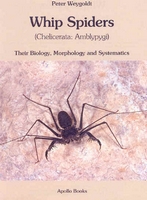 163 S., 302 Abb. Hardback. Umfassend! Whip spiders (Amblypygi) can be large and terrifying animals with strong, raptorial pedipalps and long antenniform first legs that can produce a span of as much as 60 cm. Others are small and scarcely span 5 cm. They all lead a secretive nocturnal life and are extremely dangerous to other arthropods and small vertebrates. In contrast to spiders and scorpions, they are of no commercial, economic or medical importance and they are difficult to study in the field because of their nocturnal habits.
163 S., 302 Abb. Hardback. Umfassend! Whip spiders (Amblypygi) can be large and terrifying animals with strong, raptorial pedipalps and long antenniform first legs that can produce a span of as much as 60 cm. Others are small and scarcely span 5 cm. They all lead a secretive nocturnal life and are extremely dangerous to other arthropods and small vertebrates. In contrast to spiders and scorpions, they are of no commercial, economic or medical importance and they are difficult to study in the field because of their nocturnal habits.
WIEHLE, H. 1965
Die Clubiona-Arten Deutschlands, ihre natürliche Gruppierung und die Einheitlichkeit im Bau ihrer Vulva (Arach. Araneae). 34 S. 123 Abbn.
Senck. biol 46:6 SONDERDRUCK/offprint, antiquarisch/secondhand
WUTTKE W 1966
Untersuchungen zur Aktivitätsperiodik bei Euscorpius carpathicus L. (Chactidae).
Z. vergl. Physiol. Bd. 53, S. 405-448, 29 Abb, SONDERDRUCK/offprint, antiquarisch/secondhand
